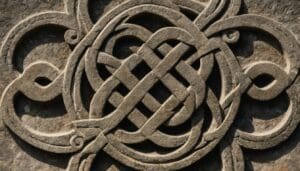The Temple of Kom Ombo: A Magical Experience Through History!
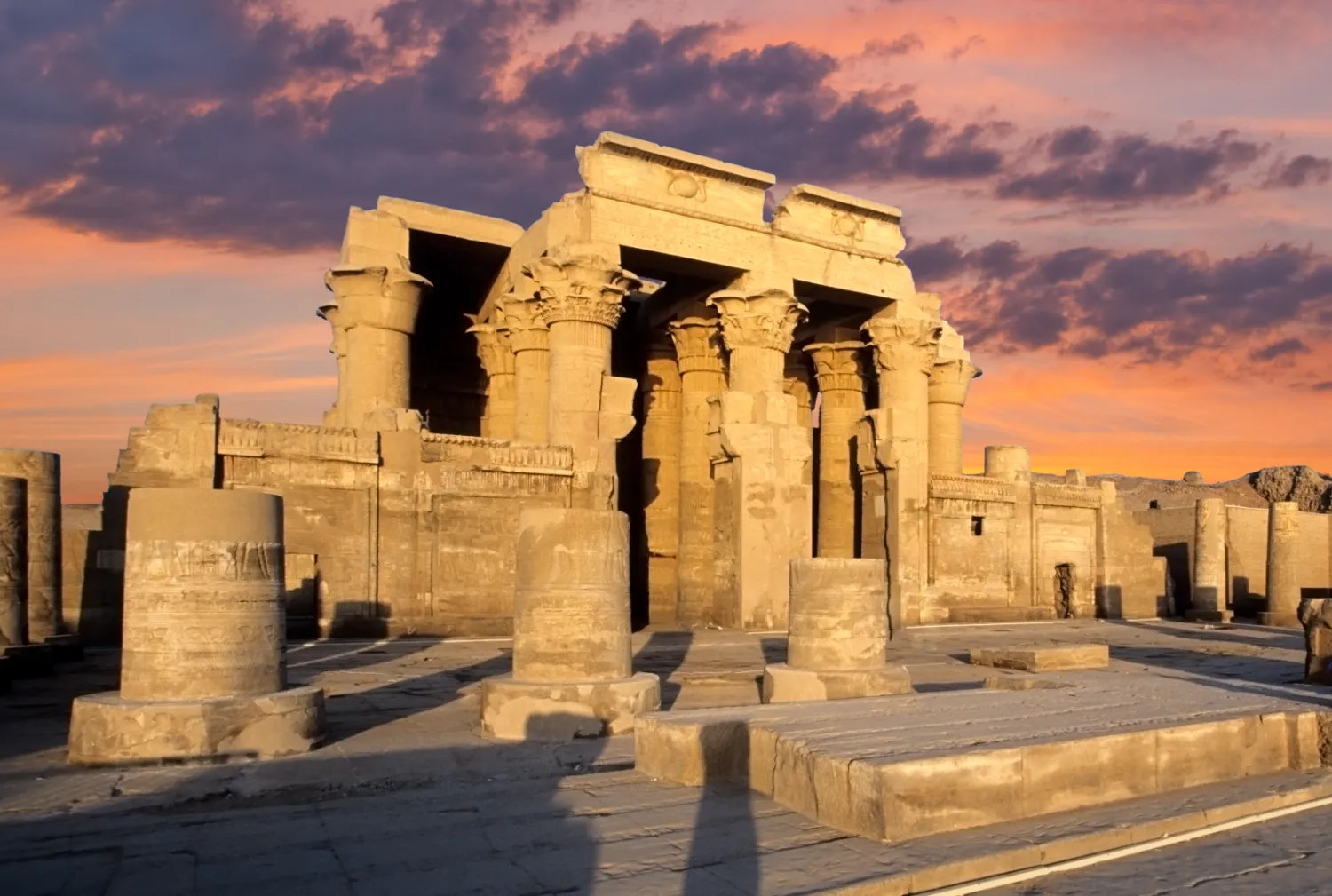
Updated On: April 18, 2024 by Ciaran Connolly
Welcome to Egypt, the cradle of civilisation, where every corner whispers tales of history. Among its many treasures is the enchanting Temple of Kom Ombo, a jewel on the banks of the majestic Nile.
Nestled in the city of Aswan, this temple offers a unique blend of mystery, beauty, and ancient lore. Standing on a promontory at a bend in the Nile, Kom Ombo is the only temple of its kind, venerated for its unique double dedication to two gods.
It’s a place where ancient Egyptian civilisation comes alive, where the Nile’s whispers carry stories of pharaohs, gods, and a civilisation that once was. Let’s embark on a journey to explore this ancient spectacle, a testament to Egypt’s rich and vibrant past.
Unique Facts About Kom Ombo Temple
Imagine standing on the banks of the River Nile, where pharaohs once stood, and stepping into an ancient world of gods and rituals. That’s exactly what awaits you at the Temple of Kom Ombo in Aswan.
This unique temple, built during the Ptolemaic dynasty, is a testament to the splendour of ancient Egypt. Ptolemy VI Philometor kick-started its construction around 180 BC, and other Ptolemies, particularly Ptolemy XIII, later enhanced it.
The temple’s inscriptions and reliefs tell tales of religious practices, medical knowledge, and even the calendar system of ancient Egypt. You’ll even find what appear to be surgical instruments, showcasing the advanced medical understanding of the time.
What makes Kom Ombo really special, you ask? It’s a ‘double temple’ dedicated to two sets of gods. One half venerates Sobek, the crocodile god, symbolising fertility. The other half honours Horus the Elder, the sky god. This dual dedication is truly one-of-a-kind in ancient Egyptian architecture.
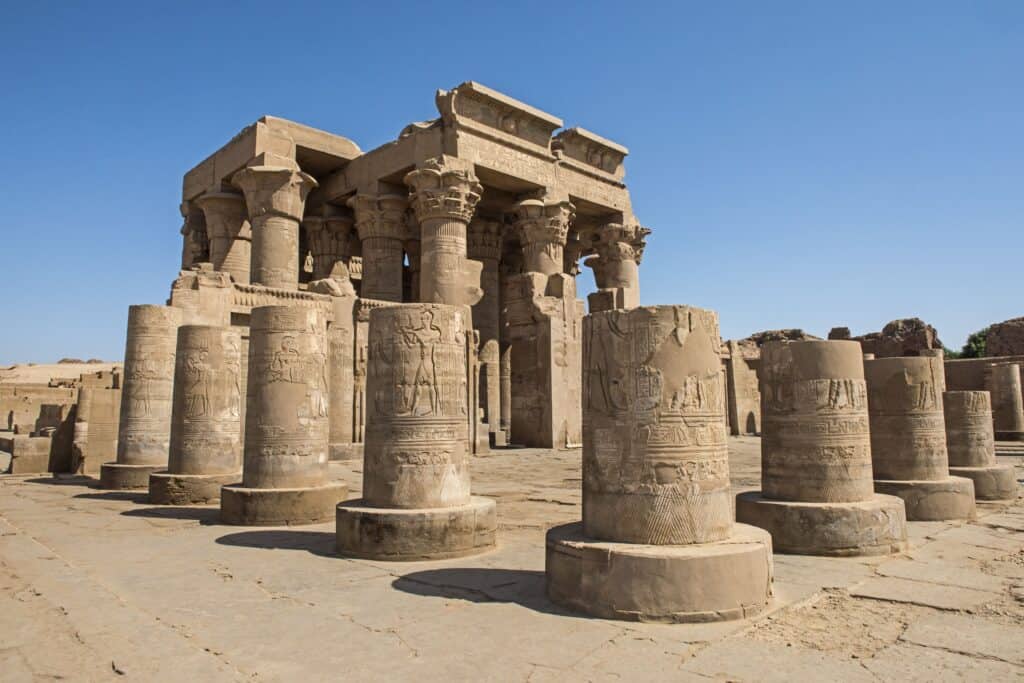
The Fascinating Tales of Sobek and Horus
As you wander through the Temple of Kom Ombo, you’ll find yourself amidst stories of Sobek and Horus, two revered deities from ancient Egypt.
Sobek, the crocodile god, symbolised strength, fertility, and protection. He was seen as a creator deity who arose from the dark, chaotic waters of Nun to create the world. In the Greco-Roman period, Sobek’s cult was associated with the Pharaoh’s power and the Egyptian army’s might. His shrines, often adorned with crocodile imagery, were believed to ward off evil.
On the other side of the temple, you’ll discover the world of Horus, the Elder, one of the oldest and most significant deities in ancient Egypt. Horus, often depicted as a falcon-headed man, embodied the sky and was a symbol of kingship.
He was deeply associated with the Pharaoh, who was seen as the living incarnation of Horus on Earth. In the Greco-Roman era, Horus was identified with the sky god Zeus, and his cult was intertwined with the power and prosperity of the empire.
As you traverse the Temple of Kom Ombo, remember you’re not just exploring an ancient structure but stepping into the living stories of Sobek and Horus, immersing yourself in the beliefs and rituals that shaped ancient Egypt and the Greco-Roman world.
Step-by-Step Guide to Kom Ombo Temple
Welcome, travellers, to Kom Ombo Temple! Let’s take a step-by-step journey through this fascinating temple.
As you approach the temple, you’ll be greeted by the sight of its grand façade, standing proudly on a promontory overlooking the Nile. Take a moment to soak in the stunning views of the River Nile.
Once you enter the temple, you’ll find yourself in the spacious courtyard. Look around and see columns adorned with detailed carvings of gods and hieroglyphic inscriptions.
Walk further, and you’ll reach the temple’s unique double entrances. Each one leads to a separate part of the temple – one dedicated to Sobek and the other to Horus.
Enter through either entrance, and you’ll step into one of the two parallel hypostyle halls filled with columns that once supported the roof. The walls here are rich with reliefs and inscriptions.
Beyond the hypostyle halls, you’ll find the sanctuaries of Sobek and Horus. It’s here that the sacred statues of the gods would have resided.
Throughout your exploration, keep an eye out for the intricate wall reliefs. They depict everything from the gods and pharaohs to scenes of daily life and even what appear to be surgical instruments.
As you exit the temple, don’t forget to look back one last time. The Temple of Kom Ombo, with the Nile as its backdrop, is a sight you’ll want to remember.
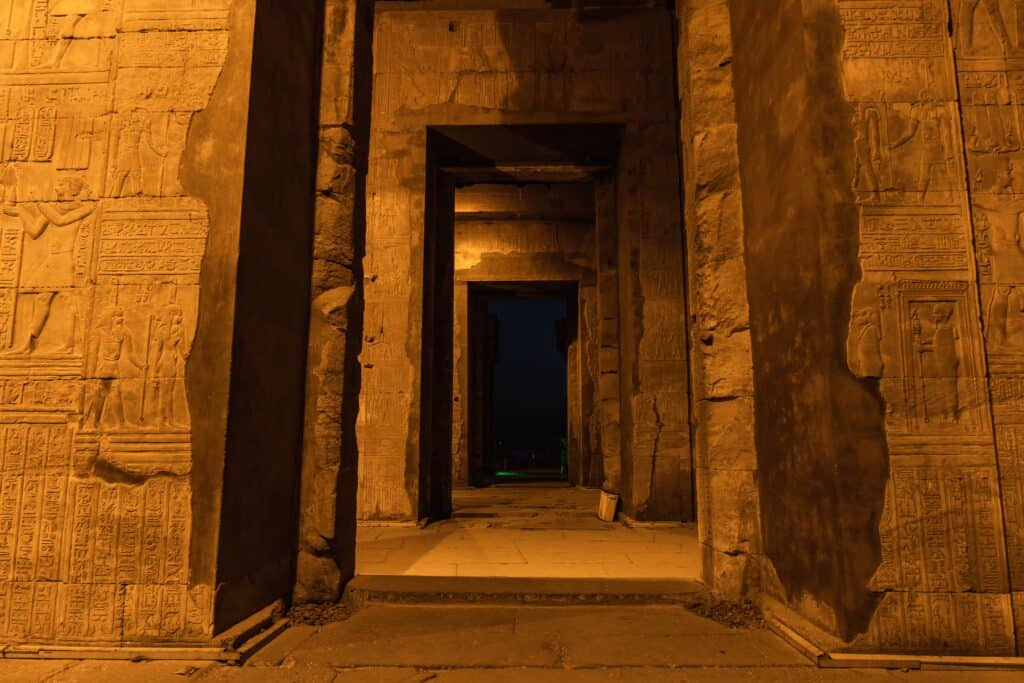
The Unusual Crocodile Museum
If you’ve been fascinated by the stories of Sobek and the sacred crocodiles at the Kom Ombo Temple, there’s another treasure waiting for you nearby – the Crocodile Museum.
It’s a place where history, religion, and nature intertwine, offering an even deeper understanding of ancient Egypt’s complex culture.
Established in 2012, the museum is located right next to the temple. It houses an impressive collection of crocodile mummies discovered in 19th-century excavations around Kom Ombo.
These mummies, carefully prepared and preserved, were once offerings to Sobek, a testament to ancient Egyptians’ intense reverence for this powerful creature.
Inside, you’ll find yourself face-to-face with 22 mummified crocodiles of different sizes, from eggs and embryos to small and fully grown adults. They are displayed in climate-controlled cases to preserve their delicate condition. You’ll also discover artefacts related to the Sobek cult, like statues, stelae, and ancient jewellery.
Visiting the Crocodile Museum is like stepping into a time capsule, where every exhibit tells a part of the incredible story of Sobek worship in ancient Egypt. So, don’t miss out on this fascinating journey. The crocodiles are waiting for you!
Why Egyptians Worshipped Crocodiles
In ancient Egypt, the crocodile was revered as a sacred animal and symbolised the might and strength of the Pharaoh. It was seen as an embodiment of the god Sobek, a deity associated with fertility, protection, and the power of the Pharaoh.
Crocodiles were found in abundance in the River Nile, which was the lifeblood of ancient Egypt. The creatures were both feared and respected for their strength and ferocity. This blend of awe and fear likely contributed to the Egyptians’ decision to worship crocodiles as incarnations of Sobek.
As for the mummification of crocodiles, this was part of a broader religious tradition of animal mummification in ancient Egypt. Animals associated with particular deities were often mummified as a form of respect for those gods.
The mummified crocodiles were used as offerings to Sobek to appease him or seek his blessings. Temples like Kom Ombo even had a sacred pool where live crocodiles were raised and worshipped. After their natural death, these revered creatures would be mummified and buried with due ritual.
Thus, the worship and mummification of crocodiles in ancient Egypt can be understood as an expression of respect for the forces of nature, a quest for divine protection, and a symbol of the Pharaoh’s power.
An Invitation to Sail the Nile to Elephantine Island
While visiting Kom Ombo, seize the chance to embark on an enchanting sailboat journey on the timeless Nile River. Your destination? The historic Elephantine Island is an archaeological treasure trove nestled amidst the Nile’s shimmering waters.
As you step ashore, you’ll discover ancient temples whispering tales of bygone eras, and a mysterious step pyramid, all set against the backdrop of stunning river views.
Elephantine Island is where history and natural beauty intertwine, offering an unforgettable experience.
And when the exploration stirs your appetite, head over to the Movenpick for dinner. Situated on the island itself, the Movenpick offers a variety of delicious dishes to satisfy every palate.
As you dine, you’ll be treated to breathtaking views of the Nile and the cityscape beyond, a perfect ending to your day of adventure. So, come, sail, explore, and dine in the heart of the Nile.
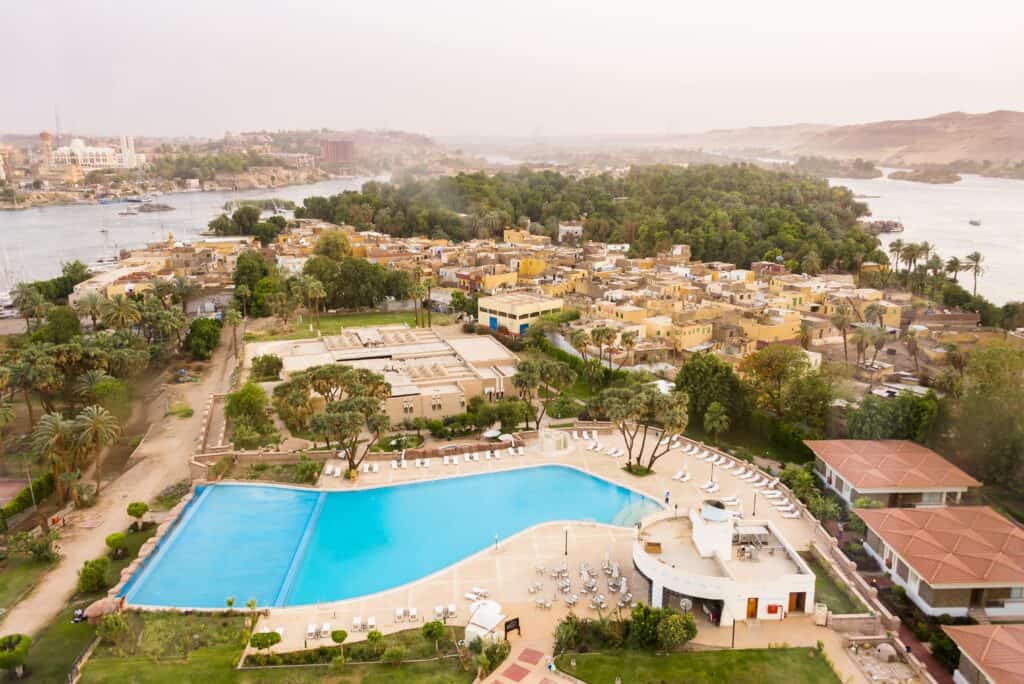
Explore The Aswan High Dam
Your journey to Kom Ombo wouldn’t be complete without marvelling at one of the country’s greatest modern feats – the Aswan High Dam. Just a short ride from Kom Ombo, this engineering marvel dramatically changed the face of Egypt.
Built between 1960 and 1970, the dam was a monumental project that tamed the Nile, the world’s longest river. It brought an end to millennia of annual floods, protecting farmland and ancient monuments. Additionally, it created Lake Nasser, one of the largest artificial lakes in the world, and provides much of Egypt’s electricity through its hydroelectric power.
Visiting the High Dam, you’ll appreciate not only the breathtaking views over Lake Nasser but also understand the immense transformation the dam brought about. It’s a testament to human ingenuity, ambition, and the power of engineering. Make sure you add the Aswan High Dam to your must-visit list; it’s an Egyptian experience not to be missed!
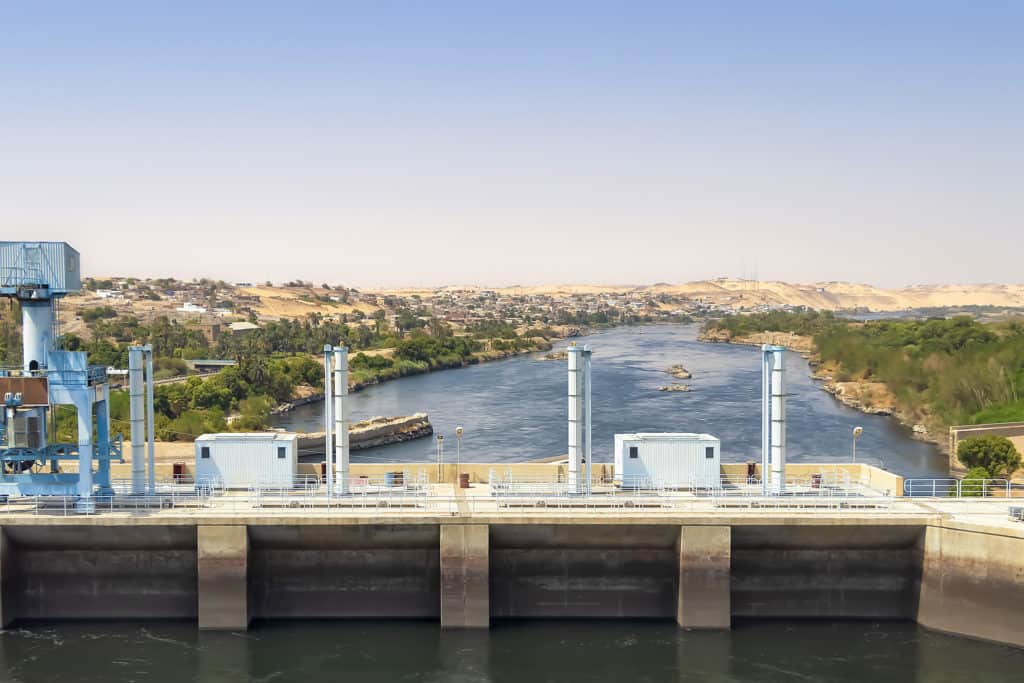
Do not Miss Visiting Philae Temple
As you dive into the fascinating history of Kom Ombo, consider broadening your Egyptian adventure by visiting the enchanting Philae Temple, a short journey away.
Set on Agilkia Island in the middle of Lake Nasser, this ancient temple complex, dedicated to the goddess Isis, is a testament to the grandeur of Egypt’s past.
Originally located on Philae Island, the temple was painstakingly relocated to its present site in the 1960s to save it from the rising waters of the Nile due to the construction of the Aswan High Dam.
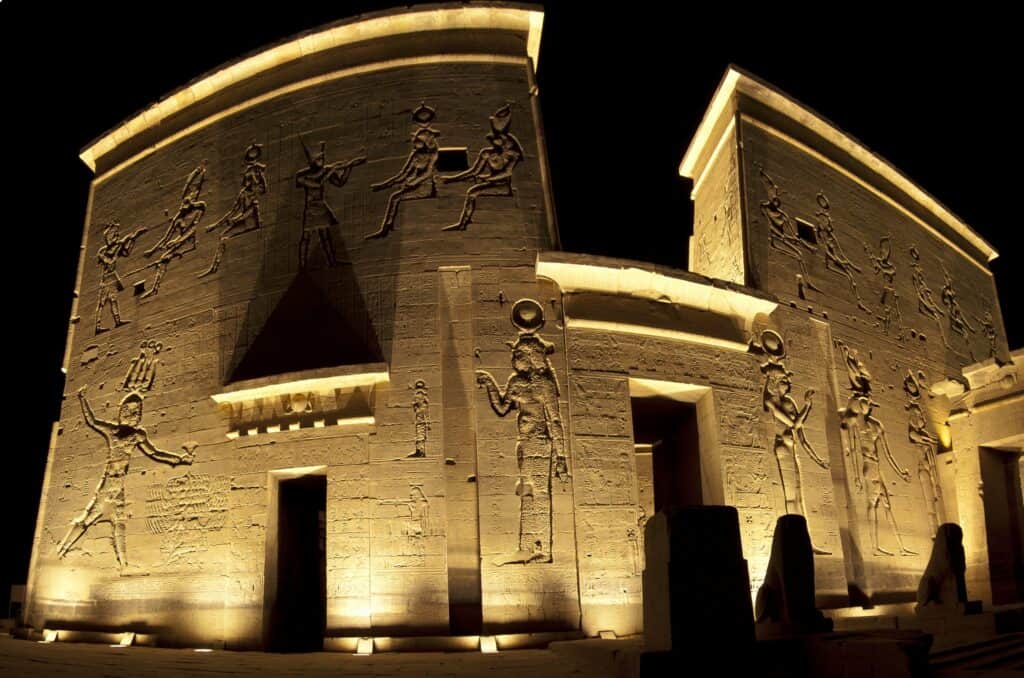
Immerse in Aswan’s Vibrant Souk
Don’t miss Aswan’s bustling old souk in the city’s heart. The souk is a shopper’s paradise, a short walk or taxi ride from most hotels.
You’ll find a colourful array of traditional Egyptian goods, from handcrafted jewellery to aromatic spices and the locally famous Aswan scarves.
Be sure to visit the well-known Shahrazad Bazaar for authentic Egyptian artefacts. The souk offers a feast for the senses with its vibrant colours, enticing scents, and lively haggling. So, wander the labyrinth of stalls, immerse yourself in local culture, and bag some unique souvenirs!
Find Your Perfect Stay Near Kom Ombo
Aswan offers a plethora of accommodations to suit all budgets, each promising a unique Egyptian experience.
Look no further than the Sofitel Legend Old Cataract Aswan for those seeking luxury. Nestled on a Nile River promontory, its rooms, starting around $300 per night, offer breathtaking views of the Nile and Elephantine Island.
Mid-range travellers will appreciate the Mövenpick Resort Aswan, located on Elephantine Island. With prices starting around $100 per night, you’ll enjoy wonderful Nile views and a peaceful island setting.
Budget-conscious visitors should consider the Nubian Oasis Hotel, with rooms starting at $20 per night. It’s centrally located and offers clean, basic amenities.
And for an unforgettable experience, consider a Nile cruise. Companies like Nour El Nil and Dahabiya Nile Cruises offer multi-day journeys ranging from $1000 to $3000, including meals and guided tours to ancient sites along the river.
Where to Eat Near Kom Ombo?
Travellers, your journey to Kom Ombo Temple must be complemented by experiencing the diverse cuisine of Aswan! Let me guide you to some dining options suiting varied budgets.
For a fine-dining experience, head to 1902 Restaurant in the Sofitel Legend Old Cataract Aswan. The grand dome and starlit atmosphere complement French and international cuisine. Prices range from $50-$100 per person.
Next, the Panorama Restaurant and Bar atop the Movenpick Resort offers a mid-range dining experience. Enjoy international and Egyptian dishes for around $20-$40 per person, accompanied by breathtaking views of the Nile.
Budget travellers can relish local Egyptian fare at El Dokka. A meal here will cost around $5-$10, and the restaurant’s central location is a bonus.
For a unique experience, try a dinner cruise on the Nile. Companies like Nubian Sea Restaurant offer cruises with dinner buffets starting at $30 per person. Bon Appétit!
So, if you’re seeking a journey into Egypt’s enthralling past, Kom Ombo Temple in Aswan is your time machine. Remember, every step you take here is a walk-through history, a journey through the tales of ancient Egypt. Enjoy your exploration!


